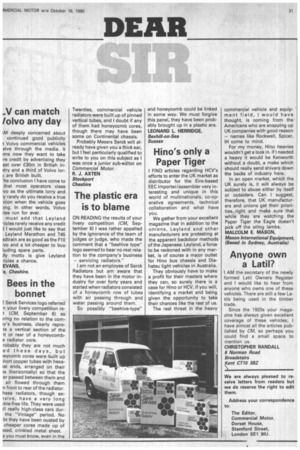Bees in the bonnet
Page 33

If you've noticed an error in this article please click here to report it so we can fix it.
E Serck Services logo referred n your livery competition ret (CM, September 6) as iring no relation to the corn-. iy's business, clearly reprets a vertical section of the it or rear of a honeycombe radiator core.
robably they are not much ed these days, but leycomb cores were built up hort copper tubes with hexaial ends, arranged on their ?.s (horizontally) so that the er passed between them and
air flowed through them n front to rear of the radiator. hese radiators, though ex'sive, have a very long Jble-free life. They were used ill really high-class cars durthe "Vintage" period. No bt they have been ousted by cheaper cores made up of ised, crinkled metal sheet. s you must know, even in the
Twenties, commercial vehicle radiators were built up of pinned vertical tubes, and I doubt if any of them had honeycomb cores, though there may have been some on Continental chassis.
Probably Messrs Serck will already have given you a thick ear, but I feel particularly qualified to write to you on this subject as was once a junior sub-editor on Commercial Motor.
R. J. AXTEN Stockport Cheshire




























































































































































































































































































